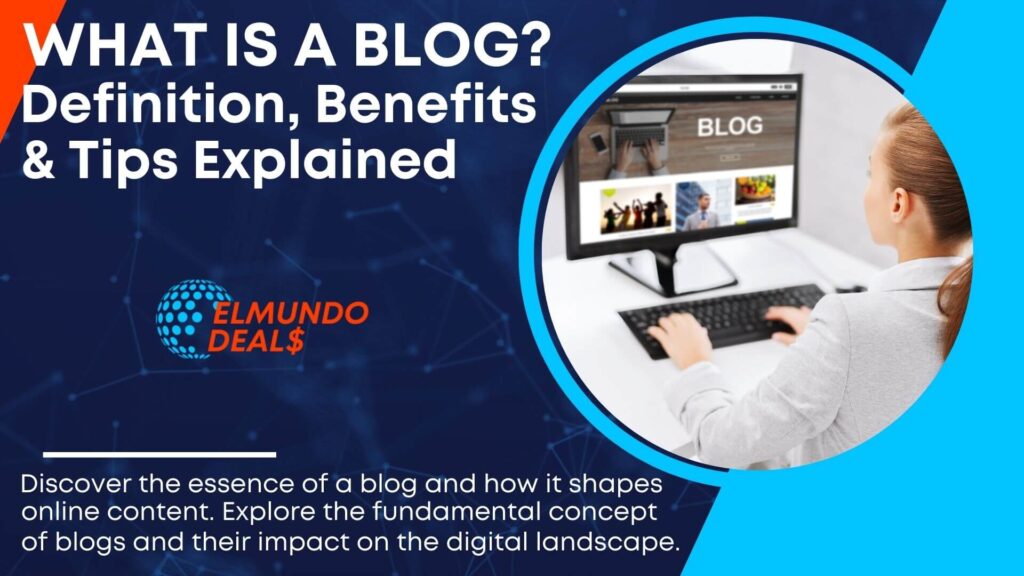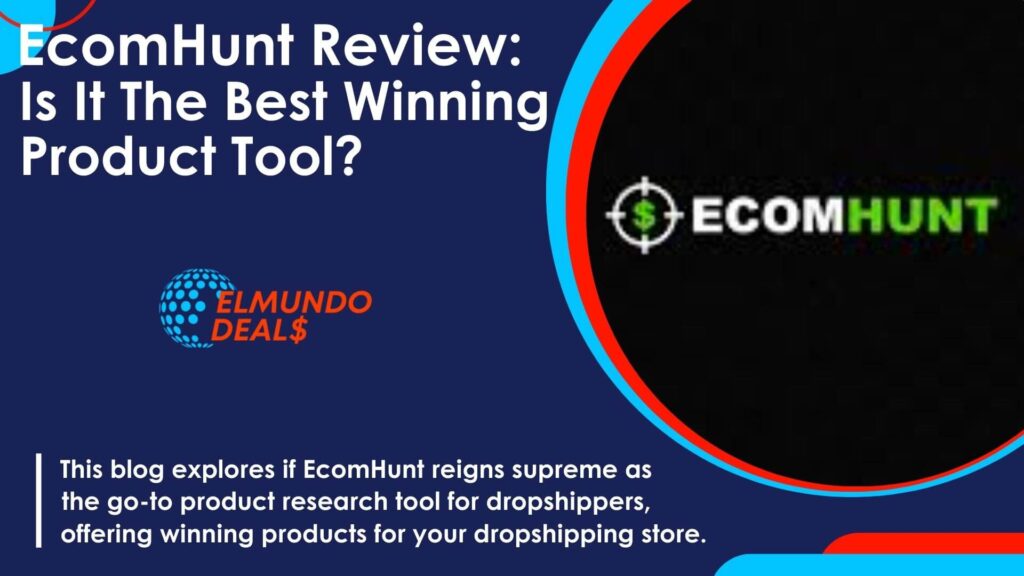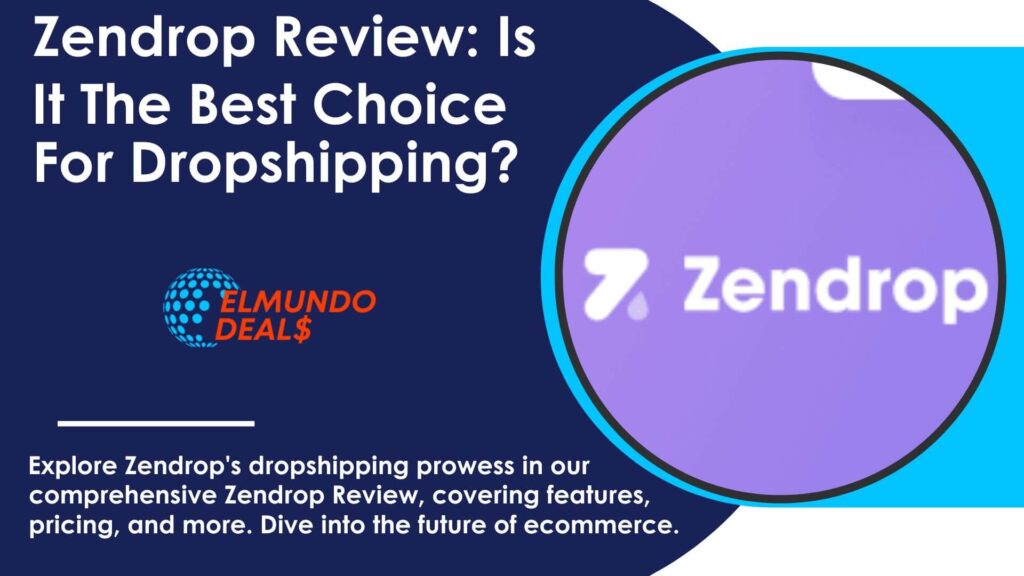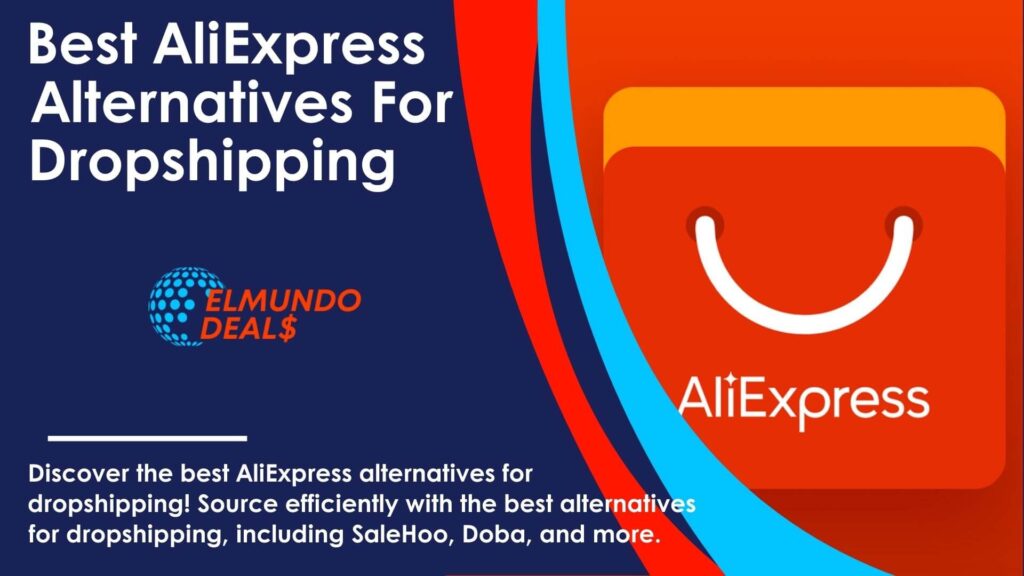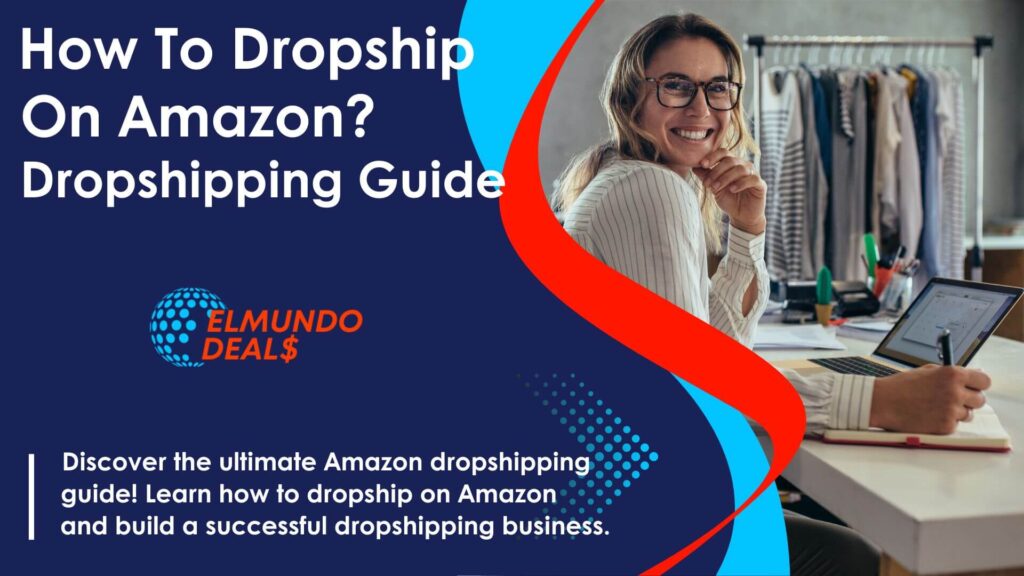How To Fund Your Ecommerce Business In 2023: 5 Best Ways To Funding For Ecommerce Business
Hopeful business visionaries have searched for imaginative ways of bringing in cash starting from the dawn of mankind. However, the previous year has made the need to procure additional pay particularly earnest.
Monetary strain is genuinely in 2023, particularly with expansion, and individuals need business thoughts that work.
Luckily, Wilderness Scout’s exploration has demonstrated on numerous occasions that maintaining an e-commerce business is a practical method for procuring pay — and can create sufficient benefit to supplant everyday work.
Regardless of vulnerability about what was to come driven by high expansion, online customer spending levels have poked higher in Q1 2023 versus Q4 2022 – uplifting news for e-commerce business vendors.
E-commerce business offers business people the sort of adaptability a conventional retailer could merely fantasize about. Online merchants set up their schedules, pay what they need to send off and develop their businesses, and can work from any place on the planet.
As a result, they prevail at all ages and training levels, numerous with no earlier business experience.
Selling items online isn’t simply available — it’s gathering a massive flood famous for internet shopping. As additional customers shift to shopping on their telephones, tablets, and even intelligent speakers, the chances to send off e-commerce business will develop.
If you’ve been contemplating beginning a business online, this is the ideal opportunity to get this show on the road. We’ll go over how to send off an e-commerce business in four point-by-point ventures and make arrangements for future development — regardless of whether you have zero start-up funds.
What is Ecommerce Funding?

The web has changed how we approach trading things. An ever-increasing number of purchasers are going to e-commerce shopping, making E-commerce business an undeniably productive business for some business people.
In addition, Coronavirus made everything more accessible, as individuals worldwide purchased additional products from the solace of their love seat. Yet, funding is one significant obstacle that any confident web-based brand proprietor must tackle to scale.
Funding is more than just an obstacle toward the beginning of an Ecommerce business strategy. When your shop is ready, you’ll require steady income to arrange stock, run compelling promotions, improve your store network, and advance your items.
Fortunately, vendors have a ton of choices concerning getting Ecommerce business funding. So which ecommerce business supporting choice is ideal? It eventually boils down to the one of kind requirements of your business.
We’re here to assist you with a better comprehension of the funding choices accessible. Then, at that point, you can conclude which will help you scale your store higher than ever. Continue to peruse to become familiar with the advantages and disadvantages of every one of the accompanying funding choices:
E-commerce business support is a funding administration that gives cash flow to online dealers. Here and there, money due and creditor liabilities need to be more precisely adjusted for online businesses.
That is where they can utilize Ecommerce business funding answers to cover their current costs and fuel development by putting resources into more stock or expanded showcasing action.
Could it be said that you are an internet-based vendor, or are you considering it? Similarly, as with any maturing business, you should get various kinds of funding for multiple purposes.
Business advances are significant for longer-term resources, for example, leases, gear, and land leases. Those items are relatively easy to track down.
Yet, transient funding is an alternate story. Income to buy the stock is often a worry, and Ecommerce business funding choices that worked for the particular change patterns of an Ecommerce business are moderately scant.
Customary support, for example, business MasterCard and transient advances, needs help finding how e-commerce businesses work. However, you can discover quick funding options designed explicitly for Ecommerce business dealers whose income needs support.
This manual for Ecommerce business funding will assist you with investigating your funding choices and finding out about an inventive, momentary supporting arrangement that is the only one worked to serve the novel necessities of online vendors.
Let’s take an inside and out check out at the most famous funding choices for e-commerce business people.
Related: 14 Best Ecommerce Fulfillment Services For Managing Ecommerce Orders
Related: How To Start An LLC For Ecommerce Business In 9 Easy Steps – 2023

What Are The Right Funding Options For E-Commerce Business?
9+ Best Funding For Ecommerce Business
1. Revenue-based funding (variable collection)
Income-based funding (here and there called income share supporting) is best for ecommerce business. It permits businesses to get between $10,000 and $5,000,000 in 24 hours. Then, every month, your bank gathers an extent of your turnover (from 5% to 25%) until you fully reimburse the credit.
The expense of these business credits is somewhere in the range of 6% and 12%. So, if you get $100,000, you will reimburse a limit of $112,000 the following month.
One of the significant benefits of income-based funding is that you want no strategies or pitch decks to apply. Moneylenders won’t run a FICO rating on you or your organization.
How you reimburse income-based finance is also unique – it goes all over, depending on how much income you’re making. At the point when you have a decent month, your reimbursement is higher, and you take care of your credit speedier. If it’s a sluggish month, the sum you repay diminishes, giving you some vital space to breathe.
Assuming you’re developing rapidly, you ought to have the option to retain that cost without any problem. Even so, if your development slows down for a drawn-out period, it can come down on your income.
An illustration of an organization that has pre-owned income-based funding effectively is the design brand Hedoine. They pursued $50,000 of funding in 2019 because they needed to spend on specific missions on Instagram and Facebook.
Those missions drove many new orders, and in the principal quarter of 2020, the brand’s deals became by 1,106%. The “level charge” variant of income-based funding is marginally unique.
You vow to pay your moneylender a decent level of your turnover consistently for as long as five years, and you’ll take care of it using 1-3% of your month-to-month income.
It implies the monthly sum you repay is lower than the variable assortment model. That’s what the enormous detriment is; assuming you hit or surpass your development focuses, the sum you’ll reimburse over the credit term will frequently be substantially more than the variable assortment model.
2. Merchant cash advance
The most ideal for accommodation and cafés, dealer loan suppliers advance clients as long as half a year’s credit and charge card turnover runs somewhere between $5,000 and $500,000. To repay the advance, moneylenders deduct around 15% consistently from your credit and charge card receipts.
3. Lines of credit
Credit extensions are an exceptionally compelling and famous business finance choice, especially for e-commerce stores. Now and again, called elective overdrafts or spinning credit, credit extensions give you the cash you can access (or draw down) when you want.
You get a decent credit limit which depends on your degree of turnover. Credit extensions can be as little as $2,000 and as extensive as $1,000,000. Suppose one of your providers runs an exceptional rebate on something you sell that is truly well-known to your clients.
In any case, to have the option to profit from that markdown, your request should be a major one. You’ve looked at your business projections and are almost sure you can clear that stock in 2-3 months. The issue is you don’t have the money at present.
With a credit extension, you can draw down the assets you want to exploit the rebate and reimburse it when you’ve sold some or the entirety of that stock. When you genuinely repay it, the money you can take from your credit extension returns once more – similar to how a Visa functions.
You compensate interest on the credit you’re utilizing – if you draw down $50,000, you have a constraint of $250,000, so you just compensate interest on the $50,000.
Funding costs on credit extensions are low. You can involve your credit extension for more than purchasing stock – for instance, you can involve it for income the executives.
4. Bank loan
A business credit from the neighbourhood bank is the main thing numerous business visionaries ponder applying for. NotwEven sonks are generally risk-opposed, and the possibilities of them loaning to a beginning or beginning phase web business are low, not to mention loaning the sum you could need.
When you pass the $25,000 acquiring level, banks get truly awkward, and making an application turns out to be significantly more muddled.
5. Bank overdraft
Then again, overdrafts are nearly simple for e-commerce businesses and SaaS suppliers once they have a decent half-year history with their bank. You pay a little charge to the bank consistently for the office, and the bank always awards you admittance to your credit extension connected to your record.
Overdrafts are intended to assist with income, yet they’re not exactly large enough much of time to use for stock buy or expansion.
As a result, your overdraft will likely be covered at somewhere in the range of 1.5 and 2 months’ turnover, and, except if yours is a multi-million-pound organization, you will not get more than $25,000.
6. Equity investors
The largest e-commerce and SaaS businesses have profited from value funding at some stage. You can find out about three sorts of value funding in our development capital article.
You can raise somewhere between $10,000 to countless dollars with value funding. The thought is that you surrender a portion of the value of your organization in return for a money infusion.
Your financial backers will be specialists in their field with a demonstrated history of developing various kinds of businesses. As a result, you’ll get as far as anyone is concerned and ability and be associated with their more extensive expert organization.
It is worth the effort – those contacts will give you and your organization bunches of new business improvement and fantastic learning experiences.
7. Crowdfunding
All over the planet, $304bn dollars has been raised by businesses utilizing crowdfunding stages, $10bn of that in the UK alone. Crowdfunding is especially famous for fire-up and beginning phase e-commerce business and SaaS businesses.
Businesses utilizing crowdfunding might be looking for anything from $10,000 to $10m. Take website composition apparatus Macaw, for instance, which raised $276,000 around 24 hours of sending off its crowdfunding effort, far beyond its unique $75k target.
In crowdfunding, only some financial backers are allowed to back businesses they like. Instead, they are compensated for their venture with a small shareholding inside your business (very much like value financial backers).
What matters is that these little financial backers won’t obstruct how you maintain your business and won’t attempt to get their kin ready. You get to spend the cash and deal with the organization your desired way.
Also, not all crowdfunding stages expect you to surrender any offers. A few stages, such as Indiegogo and Kickstarter, offer financial backers rewards.
Most rewards are the items and administrations of the organization you’re sponsoring, for example, this automated chess board made of genuine wood.
Different stages like Funding Circle offer advances to businesses, but generally not to ones with fewer than two years’ exchanging history. You can likewise sign an individual assurance.
8. Grants
Government-upheld awards are strongly wagered. However, there aren’t numerously accessible for businesses. So the aggregates included will generally be tiny as well – for instance, with this miniature business e-commerce business award in Northern Ireland, the most extreme award is $10,000.
However, you have 20% of that as extra money to apply. A few bigger ones will generally be very expert, like this award of up to $1m granted as an agreement to supply.
This award is proposed to businesses whose items and administrations help to decrease squandering and advance the reusing and reusing of specific assets and things. Yet, they will generally be genuinely a specialty.
9. Invoice factoring
Numerous e-commerce businesses have found a cheerful home on stages like Amazon and Zulily to sell their items. In return for admittance to their vast number of guests, you pay a little exchange charge to these stages each time you make a deal (in addition to a facilitating expense).
What’s less notable is that numerous outsider stages like these keep you hanging tight for your cash – sometimes 30 days, some 60 days, and once in a while longer.
You will not have the option to utilize some money from these deals to pay your staff, request new stock, and put resources into your business for as long as two months.
One of the most seasoned types of money – receipt calculating – is helpful here. It works by sending a receipt to your factory when you send a receipt to an outdoor stage or commercial centre.
They discharge up to 90% of the worth of that receipt, and it lands in your financial balance the next day. When the stage settles up, you get the rest of a bit of expense.
Receipt factors will put down a boundary (typically around one month’s turnover) on the worth of the solicitations you ship off them. They’ll frequently gladly expand your cut off if turnover increments and when they realize your business is better.
10. Resource-based loaning
At last, resource-based loaning. This funding choice will get you the hardware and gear you need and need, whether it costs $1,000 or $100,000. Rather than paying for them ahead of time, you pay regularly scheduled installments toward them. Resource-based finance is perfect for online shops that make their items.
It is possible that the hardware you currently have in-house permits you to create X number of pieces of clothing a month. Yet, you realize the interest is there for more – if, by some stroke of good luck, you have the hardware you want.
Most business gear and apparatus vendors will collaborate with finance businesses to offer resource-based loaning to their clients. Approach the organization with the hardware or apparatus you need and ask them what finance choices are accessible.
Likewise, specific kinds of resource finance permit you to supplant the hardware and gear you’re renting with the freshest models after a given period (regularly three years).
Learn More: 7 Best Ecommerce Business Insurance Options In 2023 & How To Choose
Learn More: How To Sell Your Ecommerce Business In 2023 For Maximum Value
Learn More: How To Write An Ecommerce Business Plan For Your Startup – Template

How does funding for Ecommerce business work?
E-commerce business funding gives online retailers the cash to begin or develop their businesses. Assets can emerge out of the scope of moneylenders, including the bank, private supporters, government awards, and, surprisingly, the overall population.
E-commerce business support is a funding arrangement that gives business credits to electronic traders (eShops). E-commerce business loaning assists online merchants with developing, covering, promoting costs, and increment deals.
Here is all you want to be aware of to get everything rolling or build your business with Ecommerce business funding.
The primary wellsprings of funding are held profit, obligation capital, and value capital. Businesses utilize controlled gain from business tasks to extend or circulate earnings to their investors. Businesses raise assets by getting obligations secretly from a bank or by opening up to the world.
E-commerce is a quickly developing industry with many chances for newbies with incredible item thoughts. With a touch of item exploration and arranging, you can join the positions of beneficial eCommerce business vendors.
In time, you can supplant your everyday work, similar to the 47% of Amazon merchants who are independently employed or procure pay only from e-commerce businesses.
What To Consider When Looking For Ecommerce Financing
Goals:
Clearly, understanding your goals is crucial when seeking financing for your e-commerce business. Knowing why you need funding, whether it’s for expanding your product line, marketing efforts, or investing in technology, will determine the amount and type of financing needed.
It also helps to present a stronger case to potential lenders or investors when you have a clear vision for the future of your business. Additionally, specific goals can determine other considerations, such as how much funding you require and where you can spend the money.
Some financing options only permit spending on tangible items such as equipment or inventory, making goal-setting critical to success.
Needs:
Knowing your business needs is vital when seeking e-commerce financing. Identify the amount of funding required and select a type of financing that best suits your needs – for instance, a small business loan may be ideal for initial startup costs.
In contrast, during fluctuations in cash flow, it can make sense to rely on an installment line. With a thorough understanding of what you require, approach lenders with confidence in order to increase your chances of obtaining funding more easily; bear in mind that most funds will have to be recovered subsequently, so don’t overdo it!
Timeline:
Considering the timeline for securing funds is crucial when seeking e-commerce financing. Some options take longer for approval, while others can provide funding within days.
Determine how quickly you need the funds and whether you can wait for a lengthy approval process or require a fast turnaround. Consider any upcoming expenses or investments that require immediate funding, and choose a financing option that fits your timeline.
Remember that some lenders specialize in quick funding but may charge higher interest and fees. Specialized lenders can be a good option for specific needs like equipment or inventory.
Know Who You’re Dealing With: Researching potential lenders and financing providers is crucial before agreeing to any financing agreement. It is essential to look into potential lenders’ reputations and track records and seek advice from trusted advisors.
Some lenders may offer additional benefits such as expertise and networks to help grow your business, while others may have no interest in your success. Beware of financing offers that seem too good or require significant upfront fees.
Some lenders may even want to see you fail, especially if they stand to gain more from repossessing your collateral. Make an informed decision to secure the right financing for your e-commerce business.
Finances:
Your financial situation, including your credit score and cash flow, is crucial in determining the type of e-commerce financing available to you.
A good credit score can improve your chances of securing a loan with favorable terms, while limited cash flow can make it difficult to secure traditional loans. Assess your finances and explore different funding options: small business loans, revenue-based, or equity funding.
When considering debt financing, it is essential to weigh the monthly payments and total cost, while equity financing requires meeting investor demands. Evaluate these details and other factors before choosing a financing option.
The Best Funding Resources for Ecommerce Businesses
Small businesses today have access to various forms of funding, including revenue-based financing and other alternative business funding options.
Business-focused funding platforms specializing in e-commerce are increasing, providing simplified application processes and quicker fund disbursement. These platforms offer value-added services such as growth plans and analytics to help small businesses succeed.
1. Payability
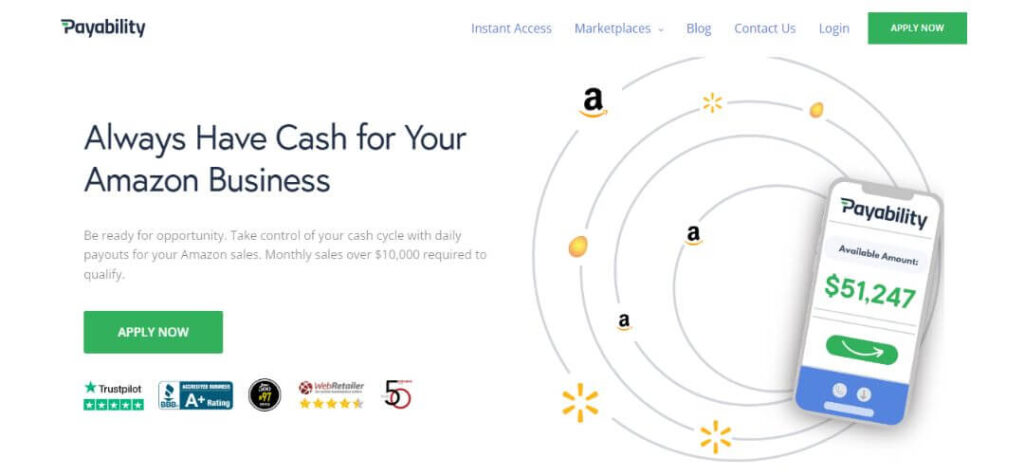
Payability offers two types of financing options, Instant Access and Instant Advance, to help e-commerce sellers access their funds faster. The platform caters to merchants on popular e-commerce platforms like Amazon, Shopify, Walmart, and Newegg, who may face cash flow issues due to delayed payments.
Instant Access allows sellers to get paid their sales revenue within 24 hours instead of waiting for marketplaces’ typical 2-week payout period. Meanwhile, Instant Advance provides sellers a lump sum of cash upfront based on their future sales.
Payability charges a flat fee for its services and does not require a credit check, making it an attractive option for sellers with poor credit scores.To qualify for Instant Access, you need at least $10,000 in monthly sales for at least three months. For Instant Advance, you must hit $50,000 in average monthly sales for nine months.
Payability can purchase future receivables through the Instant Advance option, where you get 75% to 150% of your monthly revenue and remit a fixed percentage (12% to 25%) of your sales until the advance has been paid.
2. Shopify Capital
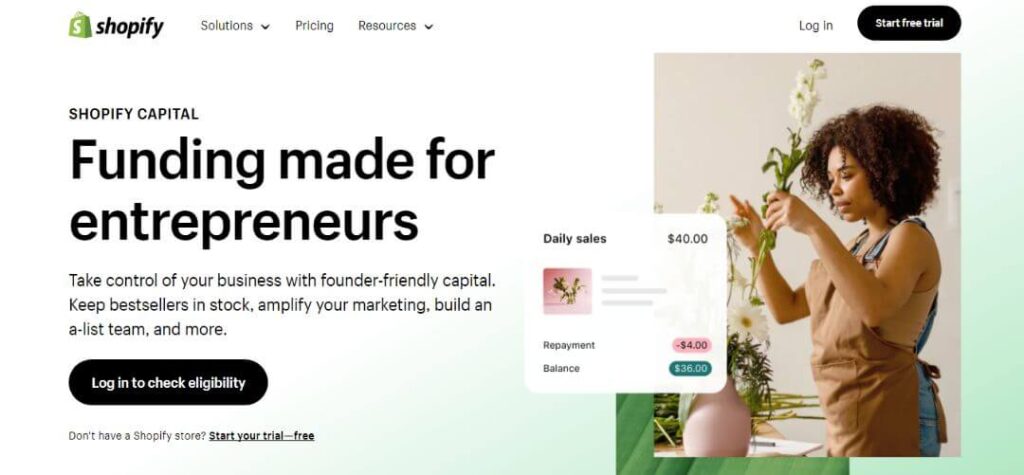
Shopify Capital is a funding program created exclusively for Shopify merchants. Qualifying merchants can apply for cash advances based on their sales history and projected future sales, with no credit check required.
The funding can range from $200 to $2 million and can be used for inventory, marketing, or payroll. Repayment is flexible and is made through a percentage of future sales until the advance is paid off.
Shopify Capital deducts part of your daily sales on the platform until the amount is recouped. The program provides an easy-to-use financing option that simplifies the borrowing process for Shopify merchants..
3. Paypal Working Capital
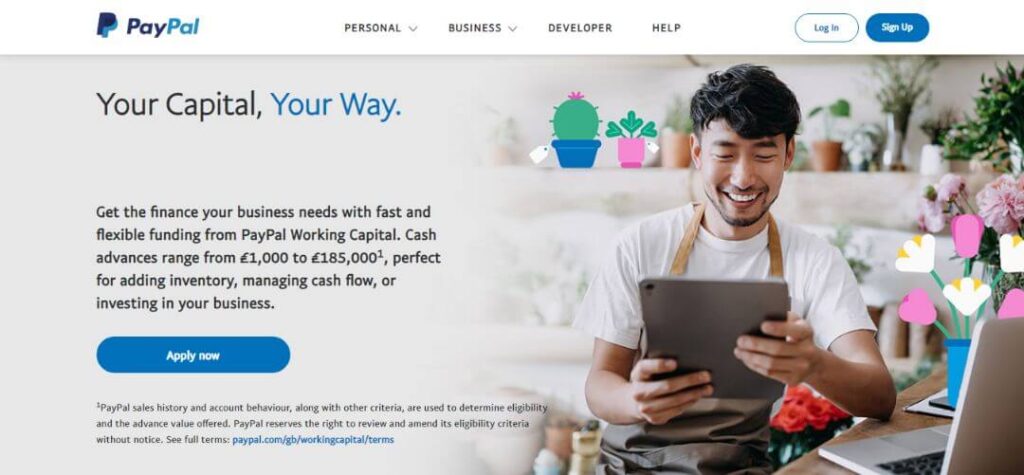
PayPal’s version of in-house financing is PayPal Working Capital, which is exclusively available to its business account holders. This option differs from traditional loans, as it bases the loan amount on a business’s PayPal sales history.
PayPal Working Capital provides loans up to 25% of the previous year’s sales, although the actual amount depends on the account history, sales volume, and past Working Capital transactions.
The application process is straightforward and accessible via the PayPal dashboard. PayPal Working Capital charges a one-time fixed fee and takes a percentage of each sale as repayment, which is a unique feature compared to other financing options.
Merchants must meet a minimum repayment amount every 90 days, depending on the loan amount. Eligibility criteria include having a three-month PayPal business account, processing $15,000 within the past year, and having no outstanding PayPal Working Capital loans.
4. Become

Become is an online platform that acts as a matchmaker between small business owners and lenders. Business owners can fill out a single application and receive personalized loan offers from over 50 lenders, including banks, online lenders, and alternative funders.
The platform offers a range of loan products, from equipment loans to lines of credit, invoice factoring, merchant cash advances, and startup loans. Become also provides educational content and a business loan calculator to help business owners make informed decisions.
For online businesses, Become offers a specific option to get a loan of up to $100,000 by connecting their Amazon or Shopify store and marketing platform accounts (Facebook or Google).
The platform generates a funding viability report based on their business data and provides loan offers with varying amounts, rates, and repayment terms.
5. Uncapped

Uncapped is a financing option for online businesses that provide various funding choices, such as revenue-based financing and inventory financing. It is available for businesses with monthly revenue of at least £10,000 and operational for six months.
Uncapped does not require equity or personal guarantees, and you can get loans ranging from £10,000 to £10 million. It also has a specific program for SaaS companies with low rates and flexible repayment terms. The fees start from as low as 2% for revenue-based financing and fixed-term loans.
Uncapped provides up to 100% of the inventory price to Amazon sellers, and repayment is based on monthly revenue. The application process is quick and easy; you can receive the funds in a few days.
Also Check This: How To Drive Traffic To Your Ecommerce Store: 10 Proven Ways
Also Check This: Inbound Marketing For Ecommerce – 11 Strategies & Complete Guide
Which ecommerce business funding solution is right for you?
Choosing the right e-commerce business funding solution can be overwhelming. Shopify Capital offers cash advances for Shopify merchants, while PayPal Working Capital provides loans for PayPal business account holders.
Become partners with over 50 lenders to offer personalized loan offers to small businesses, and Uncapped provides revenue-based financing for e-commerce businesses generating at least £10,000 in monthly revenue. Consider your business’s unique situation and goals, and weigh the benefits and drawbacks of each funding solution to make an informed decision.
These e-commerce-focused platforms are more proactive and positive towards the businesses they fund. They understand the specific funding concerns of e-commerce businesses and customize their offerings accordingly.
They also offer tools and insights to guide your growth trajectory and can even open up their networks of potential partners. To choose the right resource, figure out your growth strategy, seek out the best help that provides the most attractive terms, and see what the platform or resource has to offer aside from the money.
With the right funding solution, your business can grow and succeed. Take your time with the decision to get external funding; plenty of options are available to help you achieve your goals.
Conclusion – How To Fund Your Ecommerce Businesses In 2023
Considering that there are different supporting choices accessible to ecommerce business, each course accompanies its terms, reimbursement plan, and other monetary contemplations.
Customarily, simple strategies like getting funding from loved ones or bootstrapping the tasks yourself won’t need any deficiency of value or reimbursement.
Yet simultaneously, you want to pursue the arrangement clear to all gatherings required before tolerating any instalments. As we will examine in more detail, many supporting choices will expect you to surrender portions of your organization in return, such as crowd funding or value money management.
Then again, income-based funding and bank credits will request reimbursement and a premium over a specific timeframe. Hence, online vendors should gauge every one of the choices before them to see what’s ideal for their on-going circumstances and future business projections.





